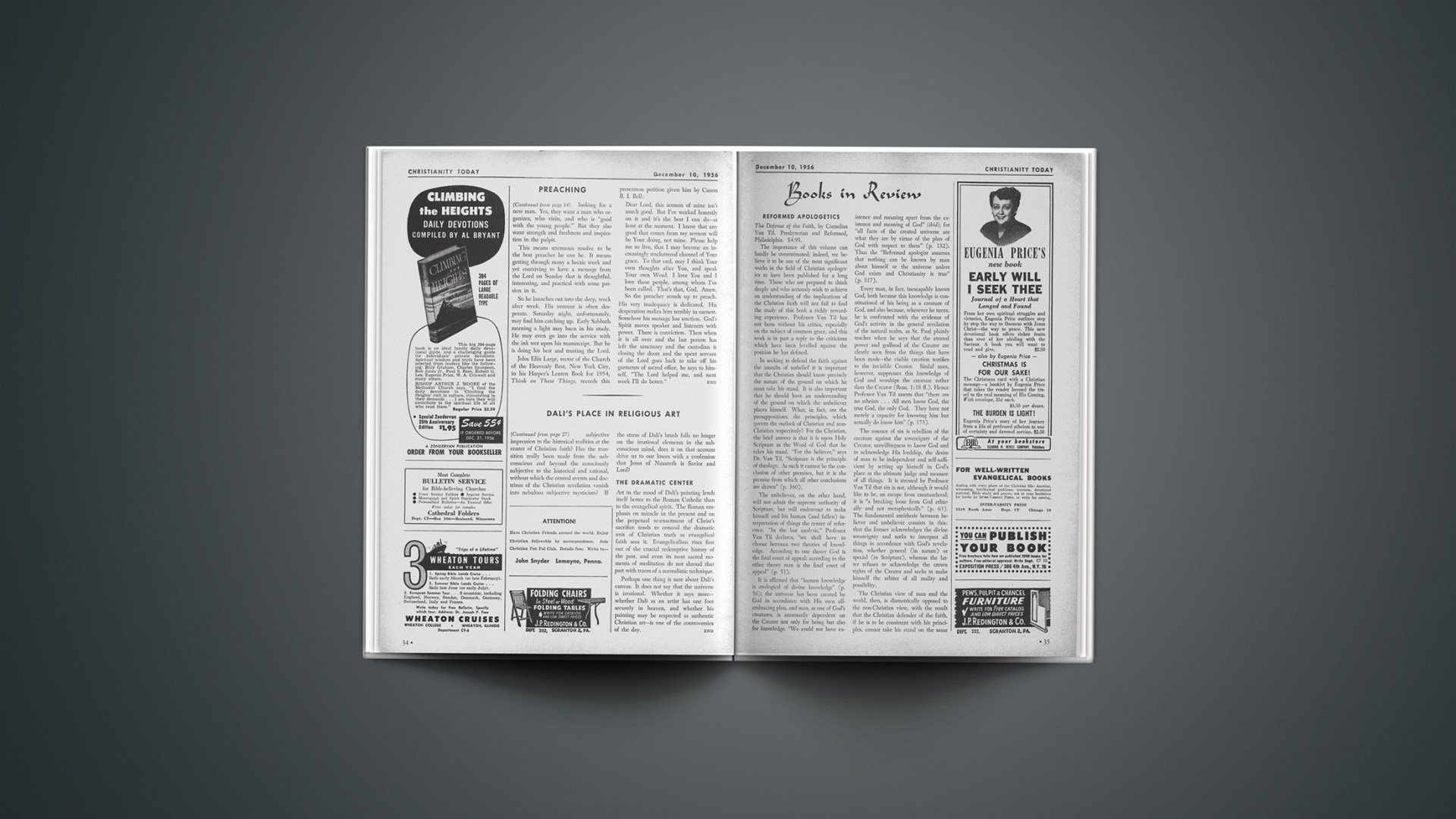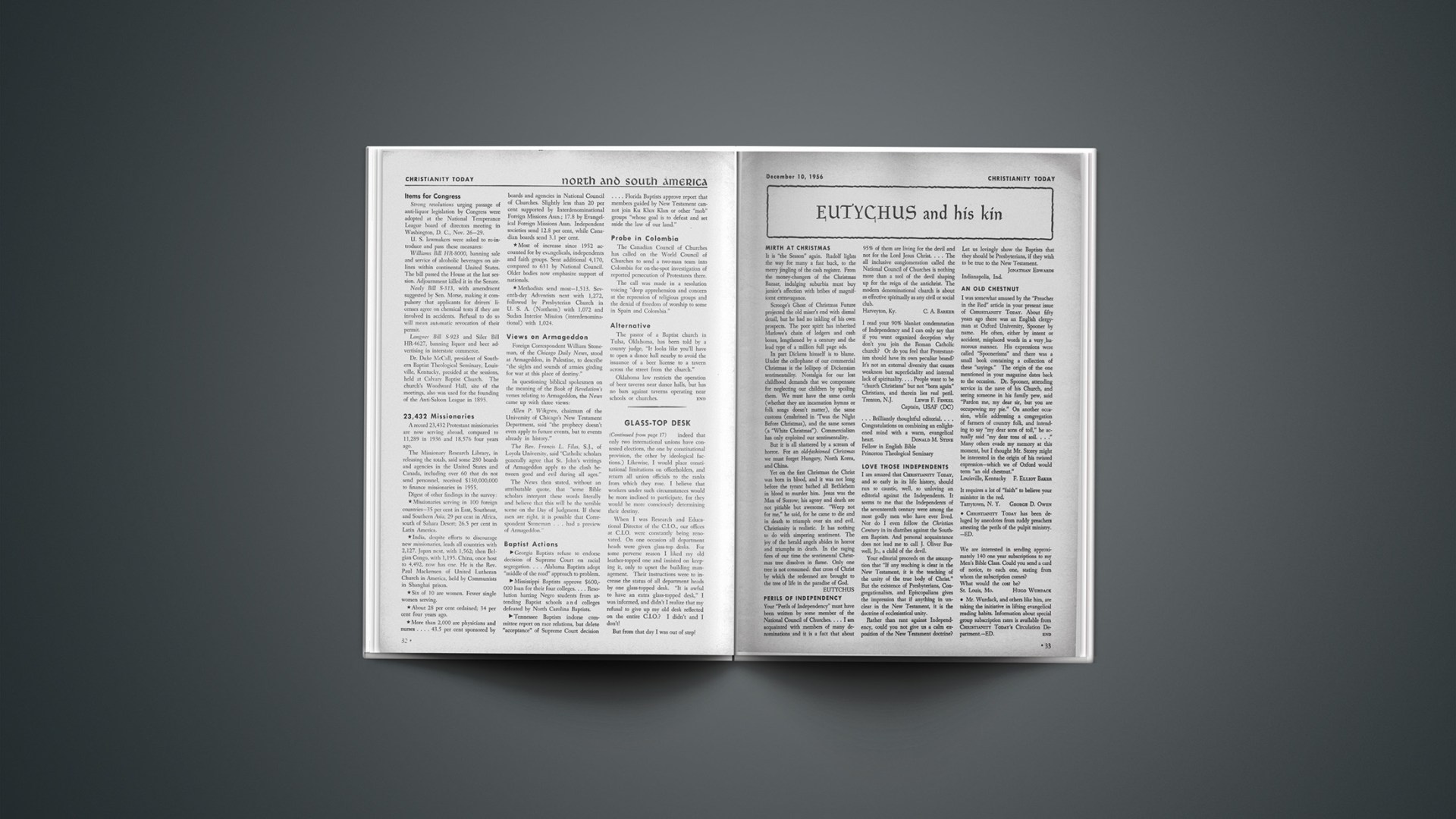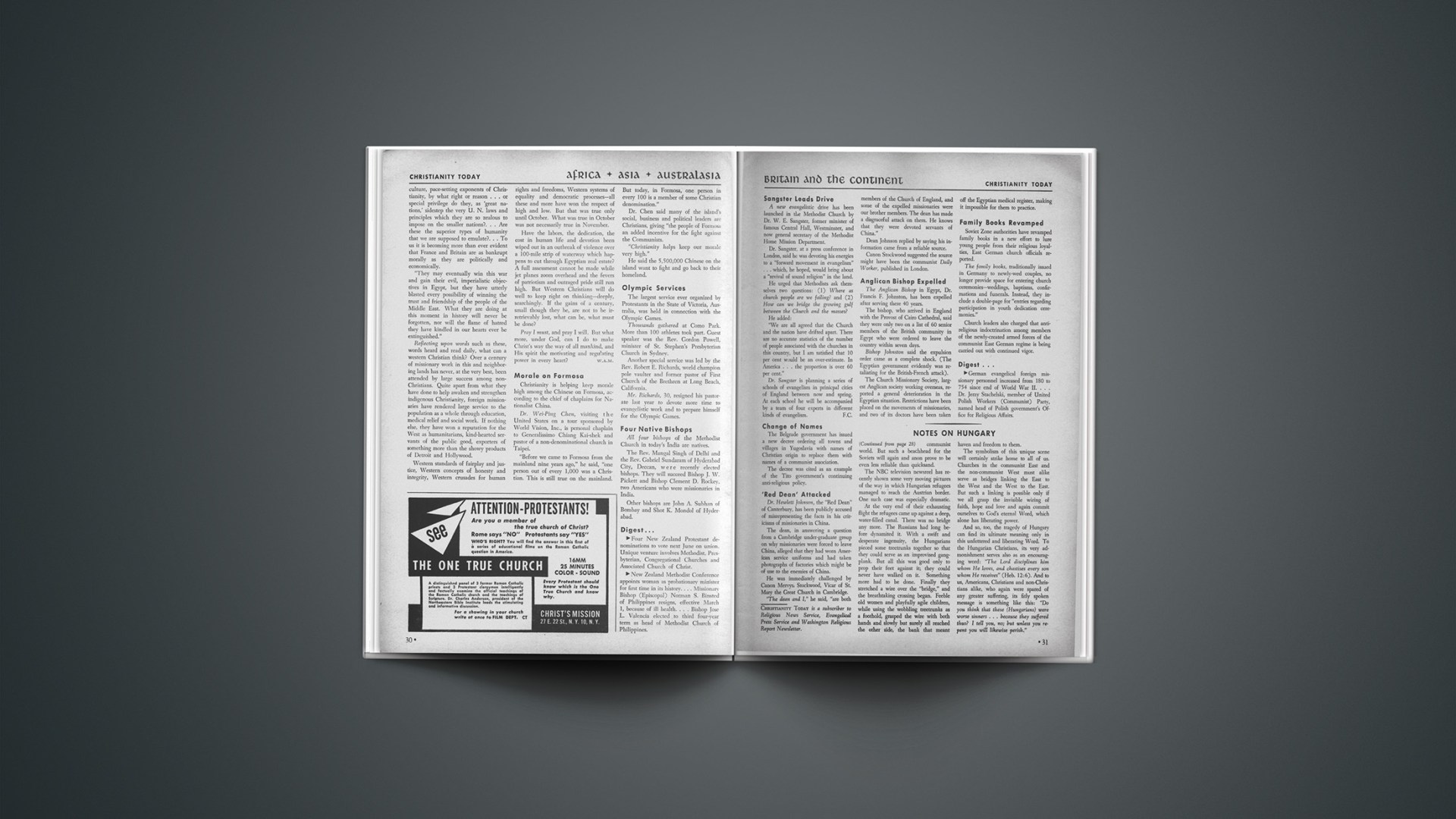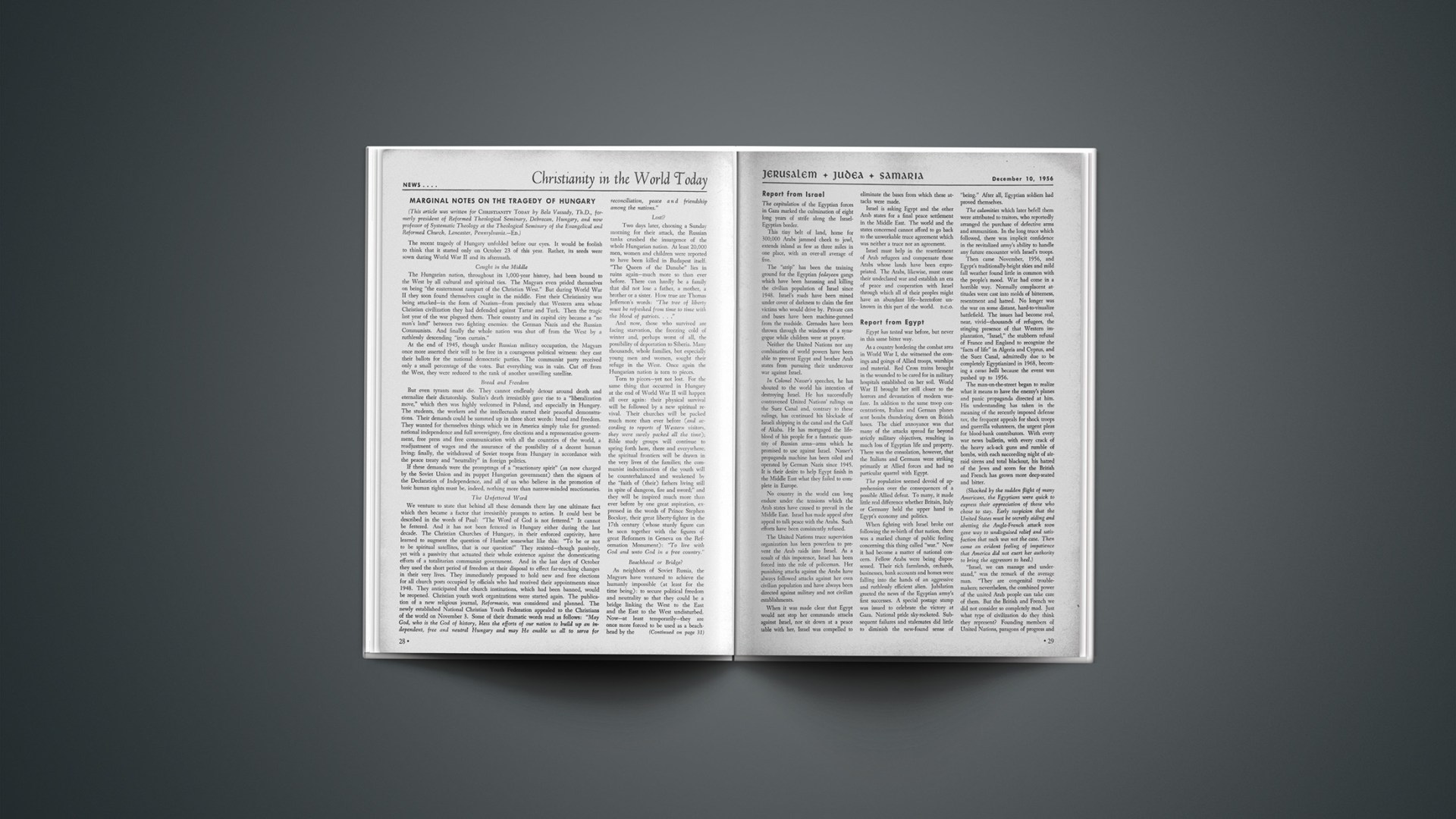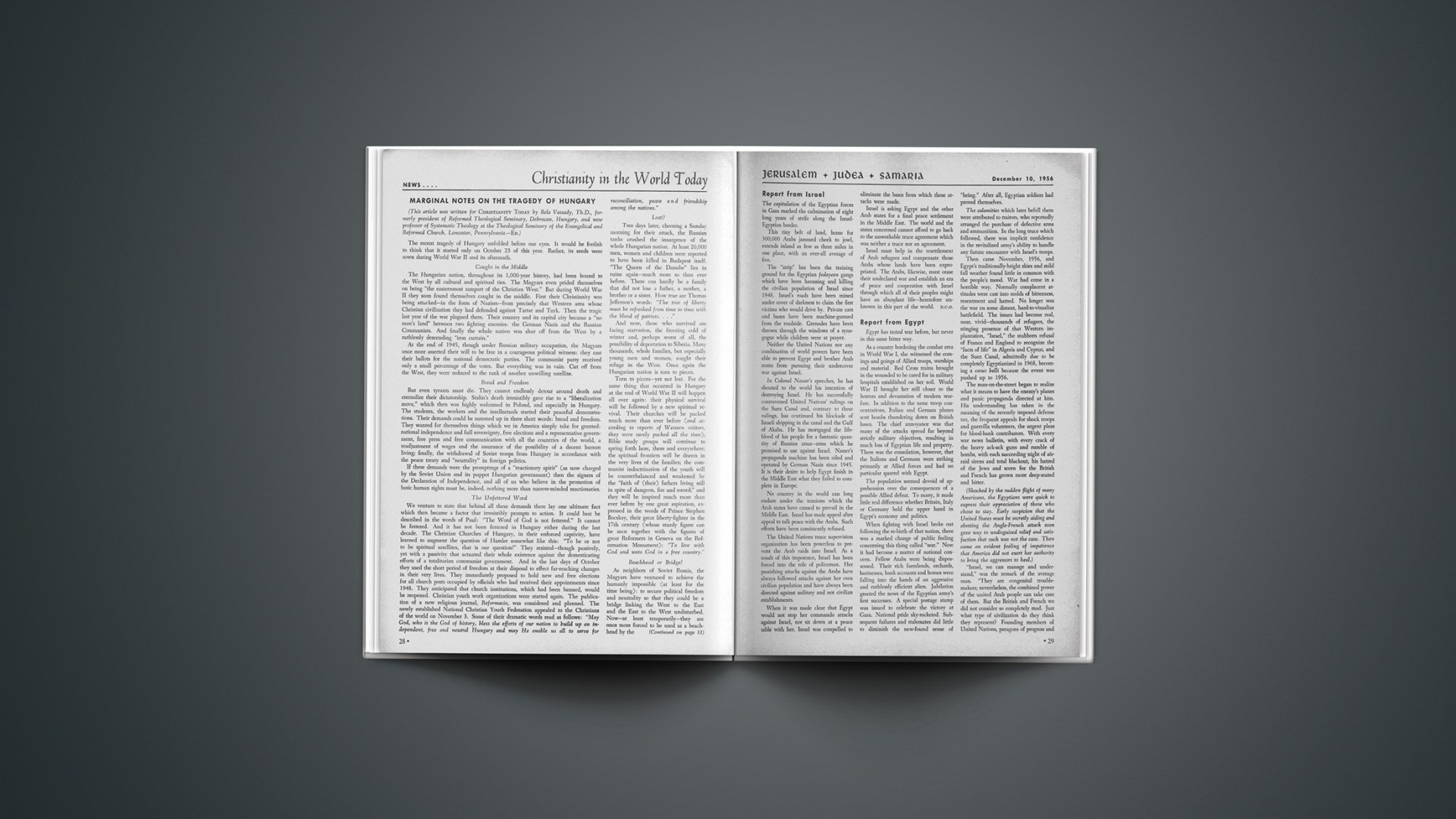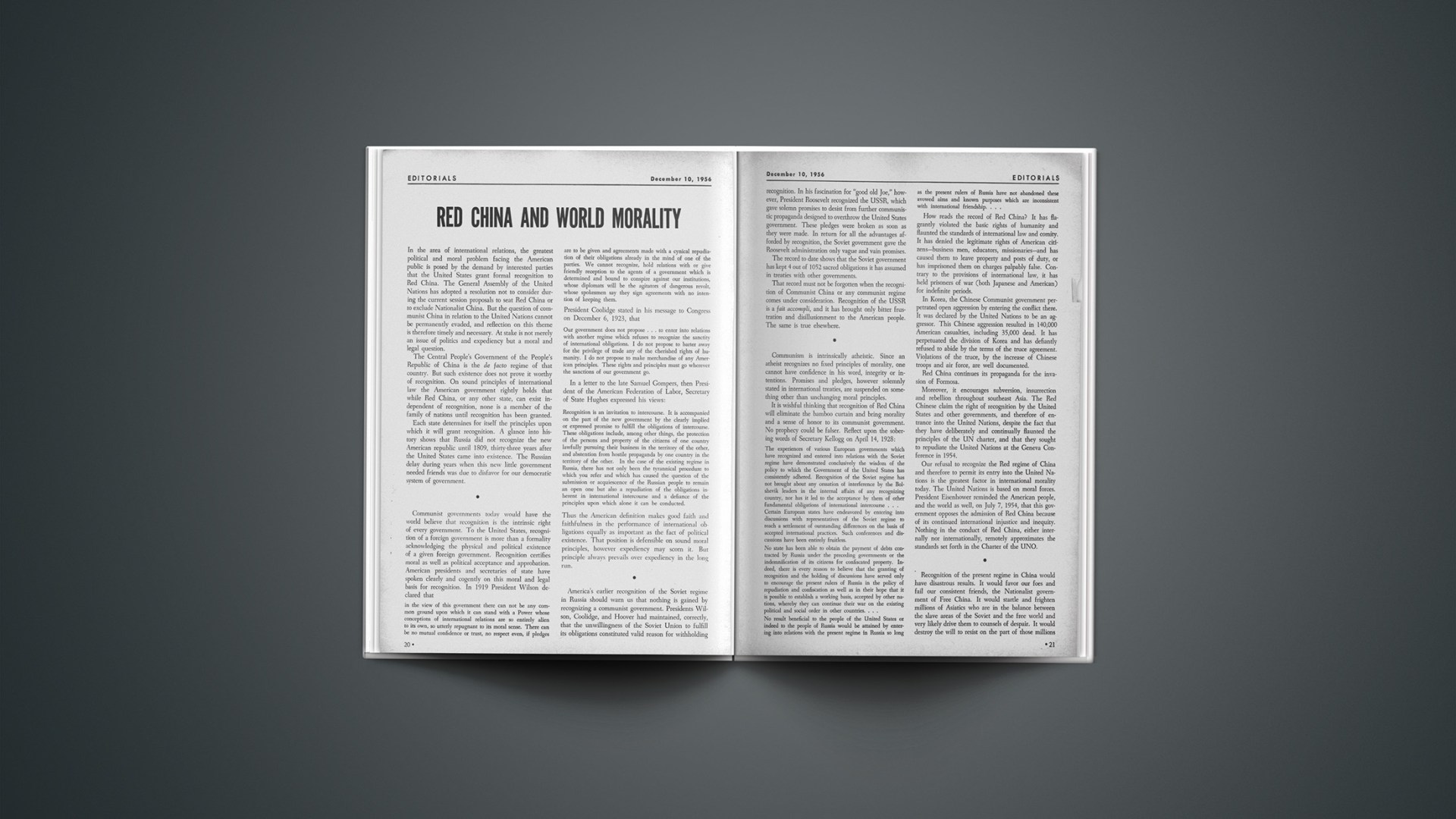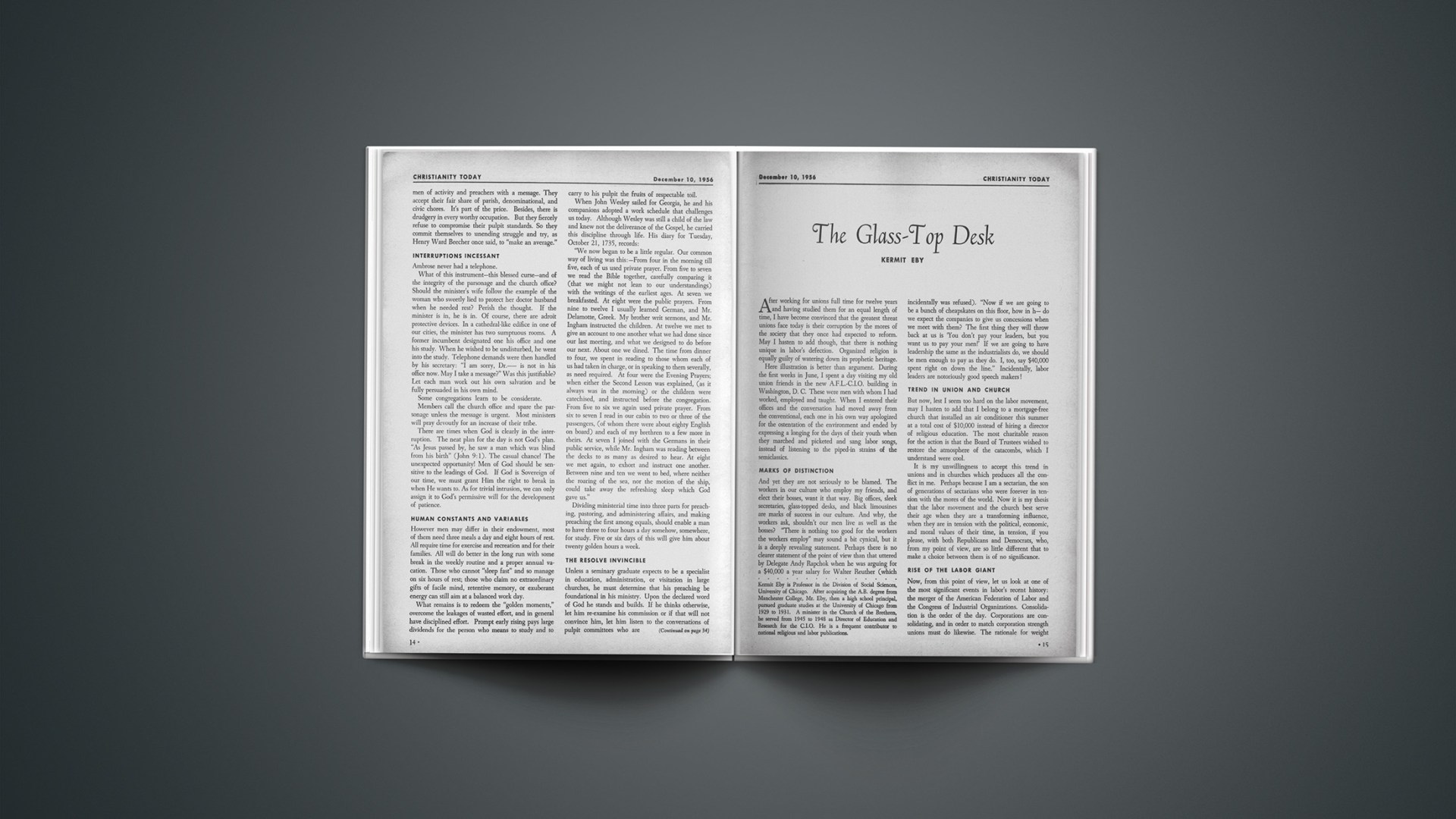Reformed Apologetics
The Defense of the Faith, by Cornelius Van Til. Presbyterian and Reformed, Philadelphia. $4.95.
The importance of this volume can hardly be overestimated; indeed, we believe it to be one of the most significant works in the field of Christian apologetics to have been published for a long time. Those who are prepared to think deeply and who seriously wish to achieve an understanding of the implications of the Christian faith will not fail to find the study of this book a richly rewarding experience. Professor Van Til has not been without his critics, especially on the subject of common grace, and this work is in part a reply to the criticisms which have been levelled against the position he has defined.
In seeking to defend the faith against the assaults of unbelief it is important that the Christian should know precisely the nature of the ground on which he must take his stand. It is also important that he should have an understanding of the ground on which the unbeliever places himself. What, in fact, are the presuppositions, the principles, which govern the outlook of Christian and non-Christian respectively? For the Christian, the brief answer is that it is upon Holy Scripture as the Word of God that he takes his stand. “For the believer,” says Dr. Van Til, “Scripture is the principle of theology. As such it cannot be the conclusion of other premises, but it is the premise from which all other conclusions are drawn” (p. 360).
The unbeliever, on the other hand, will not admit the supreme authority of Scripture, but will endeavour to make himself and his human (and fallen) interpretation of things the center of reference. “In the last analysis,” Professor Van Til declares, “we shall have to choose between two theories of knowledge. According to one theory God is the final court of appeal; according to the other theory man is the final court of appeal” (p. 51).
It is affirmed that “human knowledge is analogical of divine knowledge” (p. 56); the universe has been created by God in accordance with His own all-embracing plan, and man, as one of God’s creatures, is necessarily dependent on the Creator not only for being but also for knowledge. “We could not have existence and meaning apart from the existence and meaning of God” (ibid); for “all facts of the created universe are what they are by virtue of the plan of God with respect to them” (p. 132). Thus the “Reformed apologist assumes that nothing can be known by man about himself or the universe unless God exists and Christianity is true” (p. 317).
Every man, in fact, inescapably knows God, both because this knowledge is constitutional of his being as a creature of God, and also because, wherever he turns, he is confronted with the evidence of God’s activity in the general revelation of the natural realm, as St. Paul plainly teaches when he says that the eternal power and godhead of the Creator are clearly seen from the things that have been made—the visible creation testifies to the invisible Creator. Sinful man, however, suppresses this knowledge of God and worships the creature rather than the Creator (Rom. 1:18 ff.). Hence Professor Van Til asserts that “there are no atheists … All men know God, the true God, the only God. They have not merely a capacity for knowing him but actually do know him” (p. 173).
The essence of sin is rebellion of the creature against the sovereignty of the Creator, unwillingness to know God and to acknowledge His lordship, the desire of man to be independent and self-sufficient by setting up himself in God’s place as the ultimate judge and measure of all things. It is stressed by Professor Van Til that sin is not, although it would like to be, an escape from creaturehood; it is “a breaking loose from God ethically and not metaphysically” (p. 63). The fundamental antithesis between believer and unbeliever consists in this: that the former acknowledges the divine sovereignty and seeks to interpret all things in accordance with God’s revelation, whether general (in nature) or special (in Scripture), whereas the latter refuses to acknowledge the crown rights of the Creator and seeks to make himself the arbiter of all reality and possibility.
The Christian view of man and the world, then, is diametrically opposed to the non-Christian view, with the result that the Christian defender of the faith, if he is to be consistent with his principles, cannot take his stand on the same ground as the non-Christian opponent of the faith.
The point of contact for the Gospel, says Dr. Van Til, “must be sought within the natural man. Deep down in his mind every man knows that he is the creature of God and responsible to God. Every man, at bottom, knows that he is a covenant-breaker. But every man acts and talks as though this were not so” (p. 111).
Another factor that has to be taken into consideration is that of common grace. The antagonism of the unregenerate man to God is in principle absolute; but in practice it is curbed and restrained by the goodness of God. Common grace is defined by Dr. Van Til as “the giving of good gifts to men (by God) though they have sinned against Him, that they might repent and mend their evil ways” (p. 185).
Dr. Van Til insists that “all the knowledge non-Christians have, whether as simple folk by common sense, or as scientists exploring the hidden depths of the created universe, they have because Christianity is true. It is because the world is not what non-Christians assume it is, a world of Chance, and is what the Christians say that it is, a world run by the counsel of God, that even non-Christians have knowledge” (p. 286). In view of previous misunderstandings, Professor Van Til is careful to point out that he does “not maintain that Christians operate according to new laws of thought any more than that they have new eyes or noses” (p. 296).
Both Roman Catholicism and Arminianism come under the author’s fire for the reason that, by assigning a varying measure of autonomy to man, they compromise the authoritative revelation of Scripture and the absolute sovereignty of God in the sphere of knowledge as well as of being, thereby making a consistent and successful defence of the faith an impossibility. But Dr. Van Til’s criticism of apolgetics that is un-Re-formed, or not fully Reformed (that is, scriptural), is always marked by charity and humility. We could wish, however, that he had not used the term Evangelical as a synonym for Arminianism, and we should like to see the word Anglicanism on page 238 corrected to Anglo-Catholicism. We feel bound to inquire, also, whether it is not going beyond the limits of the scriptural revelation to declare that, because the will of God is sovereign in the world, therefore even evil and the fall must have come about within the plan and purpose of God (cv. pp. 206, 309). Not for one moment, of course, does Dr. Van Til suggest that God is the author of evil, but we believe it would be preferable to say that the evil and sin that have entered into God’s world cannot in any respect frustrate His eternal purposes, and indeed that they are overruled by God in such a manner as to work in with and set forward His purposes. The supreme example of this is the event of Calvary.
PHILIP E. HUGHES
The Actor
The Minister Behind the Scenes, by George Hedley. Macmillan, New York. $2.50.
This volume presents the sixth series of the Gray Lectures delievered at the Divinity School of Duke University in 1955.
The author, Dr. George Hedley, taught at the College of Puget Sound, the Pacific School of Religion and Hartford Seminary Foundation before going to Mills College where he is now Professor of Economics and Sociology and Chaplain of the College.
Dr. Hedley has written an interesting and helpful book. While the book is of interest primarily to pastors, it would also prove enlightening to laymen. The writer compares a minister to an actor. The similarity is primarily confined to both being upon a stage. The actor occupies the stage of the theater; the minister, the stage of the world. The actors perform for brief periods of time; the minister never leaves the stage. He is always the minister. There is no release from the “part” he plays.
The book is divided into six lectures. The first three of these are titled: (1) studying the part, (2) knowing the stage, and (3) adapting the script. The first is a call to professional reading, the second, to collateral reading; the third to the preparation of the “script.” His exhortation to pastors to return to the study of the Bible is commendable. However, we cannot approve certain methods of study he prescribes. There is wisdom in his suggestion that pastors study early Christian writings, but one questions some of the recommended commentaries and periodicals. The importance of budgeting our reading time is stressed, as also the necessity of collateral reading. The matters of sermon preparation and presentation are treated in a brief, but helpful, fashion.
Lectures four and five, “Keeping in Condition” (Recreation), and “Checking the Cash,” contain much helpful information. We do take exception to the advisability of the minister becoming a member of lodges and clubs, as suggested by the author. The advice he gives the pastor concerning financial matters is well worth pondering.
The closing lecture, six, “Staying in Character,” speaks of the essential devotional life of the minister. Dr. Hedley emphasizes the need of an appointed time, of good devotional helps, of an appropriate place for the minister’s own devotional period.
The book is well written. It is interesting and informative on many matters pertaining to the Christian ministry. The author’s understanding of the problem involved, his spiritual insight, and his Christian sense of humor contribute toward a book that is well worth reading.
E. WESLEY GREGSON, SR.
Written For God
God’s Word to His People, by Charles Duell Kean. Westminster, Philadelphia, 1956. $3.50.
Dr. Kean, Episcopal rector and Lecturer at George Washington University, is an influential minister, educator and author. His present volume discusses how the Bible came into being, its purpose, scope, essential character and the influences that molded it. The author asserts that the Bible has meaning only insofar as we view it as “the product of the Church’s (i.e., the people of God) life.” The Book and the Life are essential to each other, mutually acted and reacted on each other during the writing, and are therefore of equal authority.
The real process of compiling the Bible was conducted during a 500-year period beginning with the promulgation of the law after the building of the Second Temple, about 439 B.C. During this time a movement was initiated in Israel to establish the ideal commonwealth which Jewish leaders like Ezra and Nehemiah understood to be the nation’s mission in its covenant relationship with God, a commonwealth that would exemplify the divine purpose for the world. The Bible is actually the “life-book” of this process and reflects the changing concept of the ideal commonwealth produced by the interaction of faith and history. Three developments are noticeable: (1) the attempt at the ideal commonwealth as such, (2) the shift of the law instead of the political unit as the bearer of God’s purpose, (3) the Church as the body of Christ in whom men universally are bound to God and one another in love. Fundamental to each stage, however, is the fulfillment of the covenant relationship. In the developmental process the biblical materials underwent many changes, alterations, corrections, etc.
It is amazing what one can read out of the Scriptures after first reading into them a preconceived system, and this constitutes the primary error of this book. The interpretation of the data is thoroughly humanistic to the point that the title is a misnomer. If one accepts Kean’s approach, the Bible is neither divine revelation—the Church’s experience becomes the revelation, if it may be called that—nor is it in any positive sense inspired. The most radical hypotheses of the literary critics are consistently advanced even to the degree that significant characters become “legendary heroes.” At times one is tempted to think that perhaps the Bible was written for God’s, not man’s, edification. The Christology and Soteriology are likewise unsound. Though scholarly and interesting, this is no book for evangelical believers.
RICHARD ALLEN BODEY
Mariolatry
The Virgin Mary, the Roman Catholic Marian Doctrine, by Giovanni Miegge, translated by Waldo Smith, Westminster, Philadelphia. $3.50.
Roman Catholic teaching concerning the Virgin Mary is becoming increasingly important not only to those within but also to those outside the Roman Church. The recent definition and formal establishment of the doctrine of Mary’s assumption is one more step along the road of Roman Catholic development; it is also one more victory for the Society of Jesus, the great promoter of Marian piety. Even more important for Protestants, however, it emphasizes the difference between their views and Roman Catholicism.
For these reasons, this study of the Marian doctrine by Professor Miegge is of great value. As Professor of Church History in the Waldensian Faculty of Theology at Rome, he has not only studied the theoretical but has also seen the practical application of the doctrine. He, therefore, speaks with authority.
His method of discussion is simple and effective. Taking the various titles given to Mary, in what might be called their chronological order of appearance, he examines each in turn. After a careful historical outline of the history of the use of each, he evaluates it in the light of biblical teaching, Roman Catholic and Protestant thinking.
This work may be a disappointment to some Protestants who favor the violent method of approach to any discussion of Romanism. Professor Miegge never raises his voice. He deals with his topic methodically, carefully and soberly. In fact at times one almost feels that he is too much the detached scholar. He quotes the Roman Catholic statements in full. He endeavours as far as possible to be fair and objective in all things.
By this very cool scholarly air he is all the more devastating. For those who wish for reasoning rather than more pyrotechniques his argument is most effective. He shows conclusively that not only is the Roman Catholic doctrine of the Virgin Mary unscriptural, it is anti-scriptural and thoroughly unhistorical. Even the earlier Roman Catholic Church is in conflict with the present teaching which is set forth as divinely inspired.
The final chapter: “Mary in Dogma and Devotion” is the final blow. Professor Miegge there demonstrates with great clarity that despite all the usual emphasis on the Mass, Mary is now at the center of Romanist thought. She, althought a human creature, is the Queen of Heaven, virtually equal to the Triune Godhead. She is the supreme example of man saving himself by his good works. Christ, the Judge, the Lord of the beyond is being ushered out of the picture to be replaced by the human, sentimentalized version of the Virgin. Romanism is thus on the way to becoming, even formally, a non-Christian religion.
This book should be very useful to many who wish to understand the present developments which are taking place in the Roman Catholic Church.
The translation by Waldo Smith and the production by Westminster are both very good.
W. STANFORD REID
Mission Study
The Growth of the World Church, by Ernest A. Payne, Macmillan. 6s.6d.
This is a readable little book of 174 pages, with a useful bibliography and index. The title is perhaps a little misleading, and in some senses is rather prejudicial to the book. Dr. Payne provides a brief outline of the history of Christian Missions; this fact is better indicated by the sub-title, “The Story of the Modern Missionary Movement.” After a sketch of the work of those whom he so rightly styles “Forerunners of Advance,” the author provides the reader with an account of the outstanding features of modern missionary enterprise. It is an education to read and is just the kind of book to consider in a missionary study group.
ERNEST F. KEVAN

